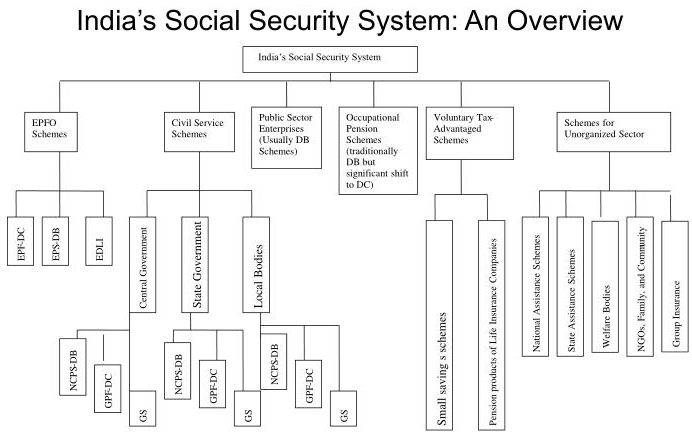Social Justice
ESI Augments Healthcare Services In India
This article is based on the “How ESI can bolster health infrastructure” which was published in Express on 15/07/2020. This article talks about how the The Employee State Insurance Corporation can play a significant role in ensuring better healthcare facilities to organized sector employees in India.
Recently, the Ministry of Labour and Employment notified that the wage limit of coverage would be increased from Rs 16,000 to Rs 21,000 per month. Healthcare is one the top priorities of a developing country like India. Successive governments in India have tried to bolster the healthcare infrastructure but much remains to be done.
As an alternative to revamping the entire structure, India can avail itself of better healthcare facilities by focusing on and improving the infrastructure under Employee State Insurance Corporation (ESIC).
Significance
- Important welfare legislation: The Employee State Insurance Act 1948, was promulgated to ensure social security and health insurance for workers in India.
- Ensures medical security: The ESI ensures medical benefit, sickness benefit, maternity benefit, disablement benefit, dependents benefit, funeral expenses, and rehabilitation.
- Wide Inclusion: It provides allowance for all employees and contract labours earning Rs 21,000 or less in wages per month. It takes care of not only the employees but also their dependent family members.
Recent Reforms
- Reduction in the burden: To increase the take-home salary of the employees, the overall contribution rate was reduced from 6.5 per cent to 4 per cent. This put more money in the hands of the employee and even the employers.
- Expansion of coverage: Another inclusive step was to enhance the income limit of dependent parents of an insured person covered under ESI Scheme from the existing Rs 5,000 per month from all sources to Rs 9,000 per month. This would bring the dependent parents of more subscribers under the ambit of ESI.
- Improving state medical service system: Recently, ESIC decided to bear the full cost of implementing the scheme. Earlier, 1/8th of the cost was borne by the states while ESIC bore the rest.
- More establishments included: To increase coverage, ESI facilities would be available even for those firms that employ less than 10 people. While for most firms, it would be voluntary, for firms in the hazardous industries, it would be mandatory. Previously, firms with 10 or more people could only avail themselves of this facility.
Challenges
- Optimum utilisation of funds: ESIC has massive surplus in its reserve funds. There Is need to invest these funds:
- To establish new medical infrastructure
- Upgrade the current medical infrastructure
- Improve the services provided to the increasing number of beneficiaries.
- Regional disparity: If ESI coverage has to be extended all over India, at least one ESI dispensary per district is required and several model ESIC hospitals in every state.
- For example, in the entire Northeast India, there are only ten ESIC dispensaries and only one ESIC Model Hospital in Guwahati, Assam.
- Strengthen tie-ups: ESIC also has tie-ups with private hospitals for super-speciality services. The beneficiaries avail themselves of this cashless benefit.
- However there is a need for ESIC to strengthen the tie-ups by ensuring that the private hospital bills are settled promptly so that the ESI beneficiaries can continue to get hassle-free service.
Way Forward
- Upgradation of Services: On an immediate basis, to improve the standard of services, ESIC can improve the infrastructure of the current dispensaries and the hospitals on a war footing and ensure the availability of more types of medicines in the dispensaries.
- Extension the ESI to Non notified areas: Coverage should be extended to all areas. Currently, ESI Coverage is restricted only to notified areas.
- Simplifying the financing: It would have a positive impact on the quality of services delivered by reducing red tape and increasing the overall accountability of the ESIC.
Conclusion
It is now apparent that the ESIC is a purposeful organisation serving millions of people and the government is consciously increasing its ambit of impact. Although many positive changes have been proposed and implemented in recent times, much more can be done and the ESIC can be a model organisation for countries around the world.
|
Drishti Mains Question Improving the facilities under ESIC is a panacea to Healthcare service delivery in India. Discuss. |
This editorial is based on Disentangling India’s trade Surplus which was published in Hindustan Times on July 20th, 2020. Watch this on our Youtube channel now.





